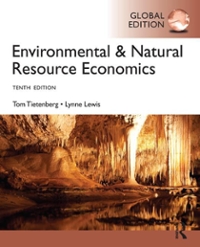Question
Investment (firms) = Private Saving (households + firms) + Public Saving + Foreign Saving We showed that since the late 1990s public saving has been
Investment (firms) = Private Saving (households + firms) + Public Saving + Foreign Saving
We showed that since the late 1990s public saving has been negative, foreign saving positive. While a gross oversimplication, it's not unfair to say, however, that increased foreign saving, which shows up as negative trade balances, has financed the U.S.'s increasingly negative public saving. But what about the breakdown of private saving between households and firms?
Take a look at the posted Discussion Board (Week 3) short Bloomberg piece, written by Tyler Cowen, a well-known (renaissance-man!) economist at George Mason University and guardian of what's become the most widely read economics blog of our day,Marginal Revolution.
In your primary post, answer each of the following three questions.
- Identify the costs and benefits of low personal saving rates in the U.S.
- Identify the costs and benefits of high business saving rates in the U.S.
- In your view, is the European model of higher personal saving rates or the U.S. model of higher business saving rates preferable? Explain your answer carefully. And, yes, you must take sides.
Step by Step Solution
There are 3 Steps involved in it
Step: 1

Get Instant Access to Expert-Tailored Solutions
See step-by-step solutions with expert insights and AI powered tools for academic success
Step: 2

Step: 3

Ace Your Homework with AI
Get the answers you need in no time with our AI-driven, step-by-step assistance
Get Started


